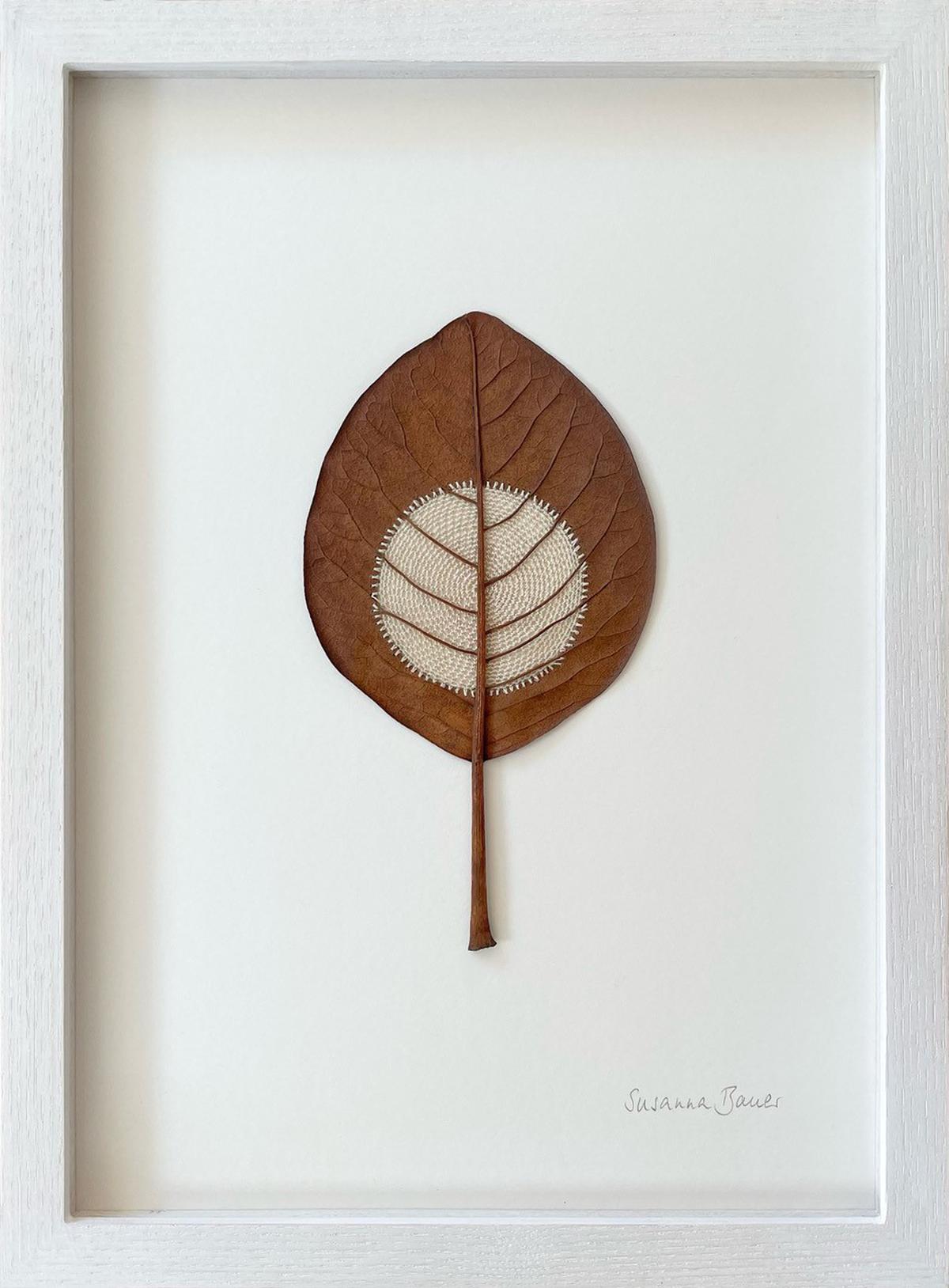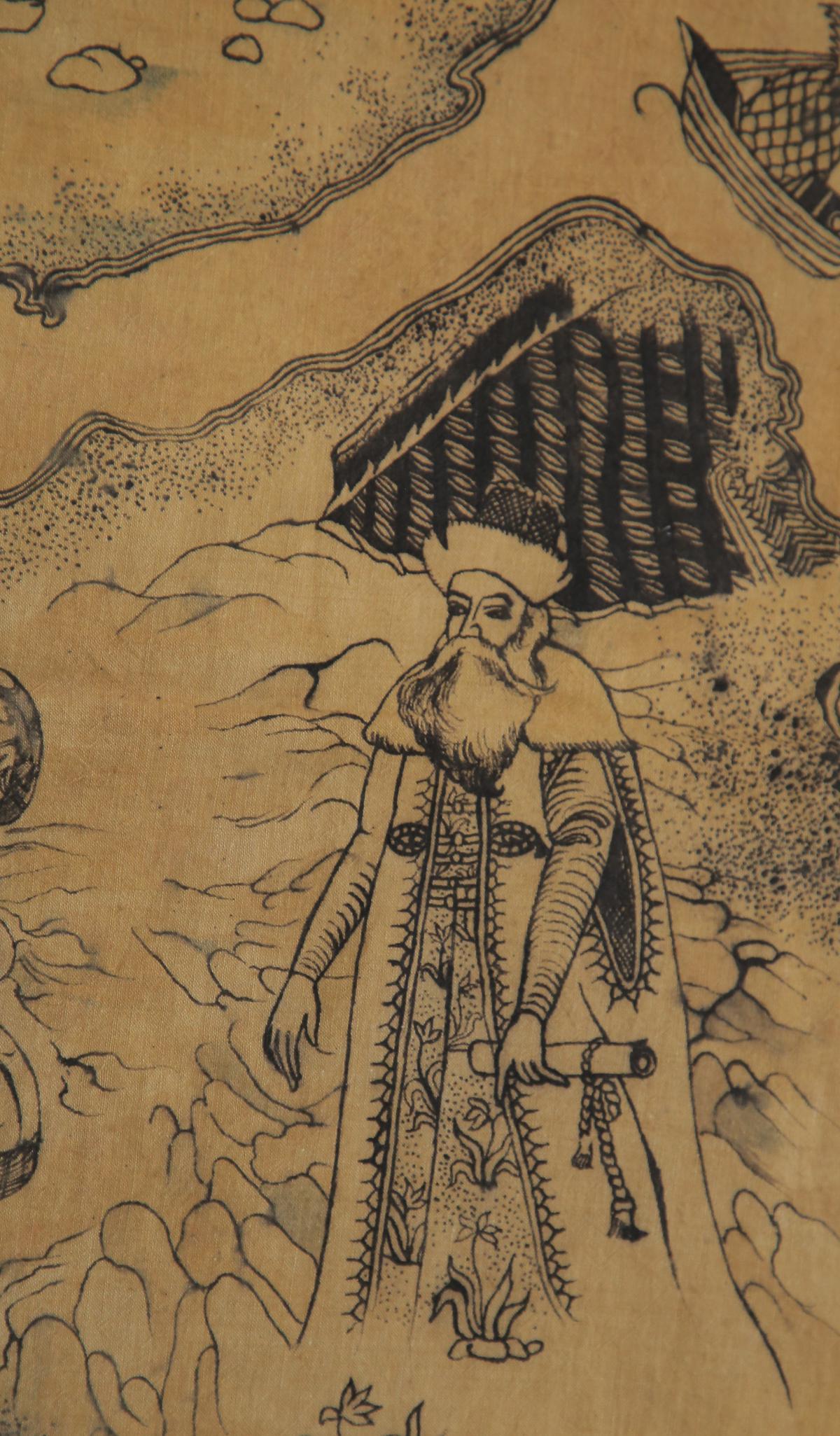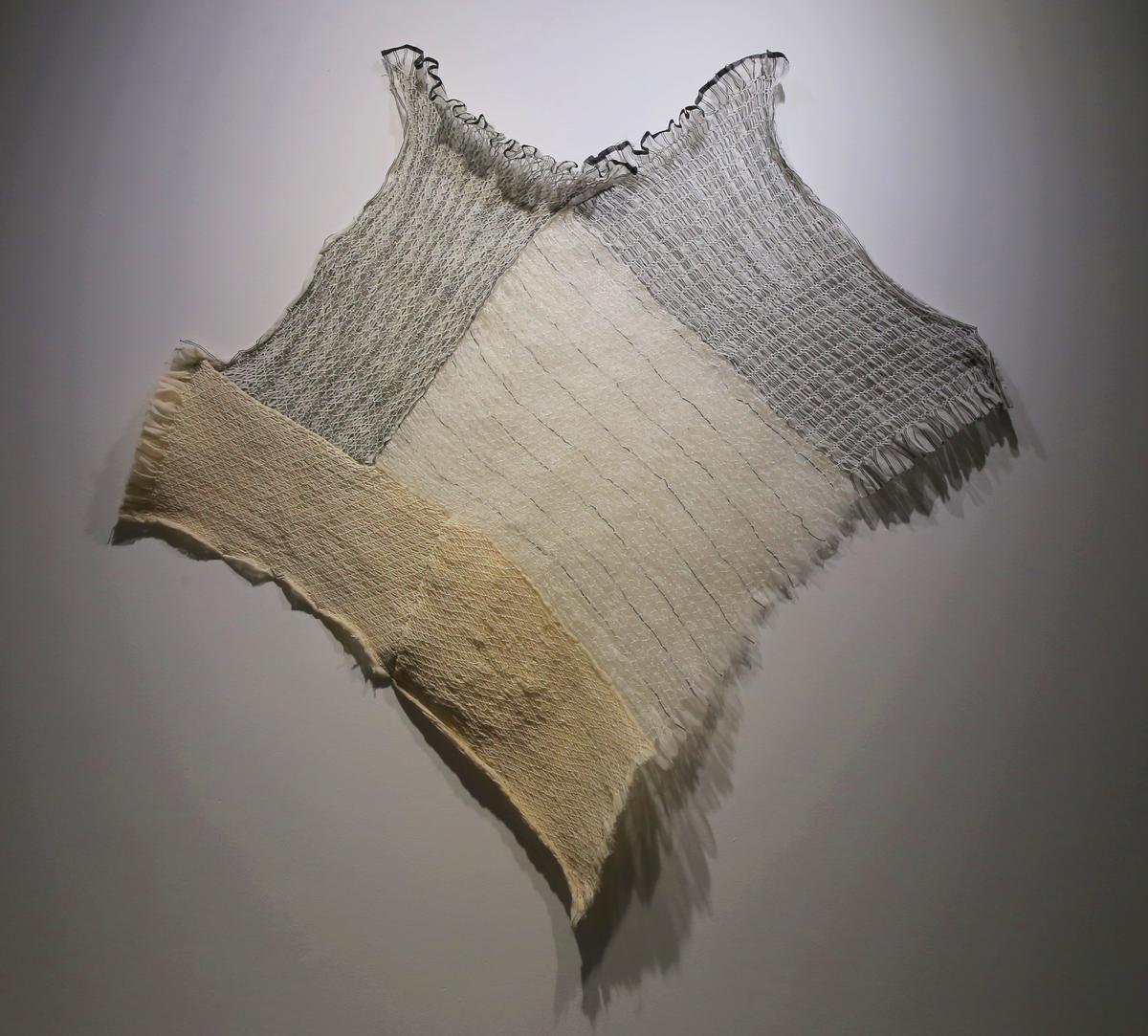At Dhi Artspace in Hyderabad, the Crafting the Crossroad exhibition showcases how five contemporary artists draw inspiration from traditional crafts
At Dhi Artspace in Hyderabad, the Crafting the Crossroad exhibition showcases how five contemporary artists draw inspiration from traditional crafts
Artworks made using bamboo, crochet, beads, hand-painted kalamkari and crochet greet visitors at Dhi Artspace, Hyderabad. The exhibition, titled Crafting the Crossroad, is an attempt to use craft as fine art. In the process, the five participating artists attempt to address questions of identity as well as showcase the history and cultural context of the craft. Curated by Somedutta Mallik, the exhibition puts the spotlight on the work of artists Chathuri Nissansala, Shruti Mahajan, Mousumi Karmakar, Rajarshi Sengupta and Susanna Bauer.
In memory of Easter bombings
Chathuri Nissansala, a multidisciplinary artist from Sri Lanka, pays homage to those who lost their lives in the suicide bombings that shook Colombo on Easter, 2019. Her series is titled ‘When flesh fades away, all you are left with is the memory of them’. She uses broken and dismantled idols collected from the bomb attack sites and harnesses beadwork and costume-making techniques of southern Sri Lanka to create artworks that can start a dialogue about the unrest and violence in her country. Her research took her to the new memorials within the churches that were attacked, where she saw salvaged materials being displayed in memory of the departed. The costumes she uses to dress up the idols and found objects is a dying craft native to the Matara coastal region of Sri Lanka. Chathuri apprenticed with Somapala Pothupitiya, who is reportedly among the last artisans from the Navandanne community who practices the technique. Keen to understand the tradition of ritualistic costume-making, Chathuri also wanted to create a new discourse by using it to invoke a sense of healing and hope.
Mousumi Karmakar draws inspiration from bamboo and palm fibre fishing cages of West Bengal
| Photo Credit: Special Arrangement
Mousumi Karmakar’s work draws inspiration from the fishing community in West Bengal. The artist from Kolkata draws viewers’ attention to cages made of bamboo and palm tree fibre, which some of the fishing communities use. The cage with criss-cross grid patterns, when lowered into the water, traps the fish. Mousumi uses bamboo and palm fibres to build architectural models as well as small portraits of the craftwork. Having grown up watching her father, a carpenter, create different objects, she was inclined to learn to make structures and her art practice helped her create abstract sculptural forms.
Not just a leaf
Susanna Bauer uses natural leaves and crochet to draw our attention to the beauty and intricacies of the environment and the relationships we forge with the world. A close look at the lone leaf that is framed and the delicate lace crochet work comes into view. The artist who hails from Germany and now works in the UK, in her statement, reveals that handmade lace crochet on leaves is a laborious technique, given the fragility of the surface material — leaf. She uses fine hooks, needles and threads to make patterns on leaves. She also works with crochet to join and reshape leaves and form branch-like structures.
Hand-painted kalamkari becomes the medium through which Rajarshi Sengupta reflects on early settlements around water bodies, the lifestyles of craft communities and the trade routes. A kalamkari artwork in natural dyes displayed on a table has multiple images that can be viewed from different angles. Some of the imagery in his work reflect how the kalamkari artisans wash and dye the fabric, the landscapes and other details. During his visits to kalamkari craft clusters in Machilipatnam, he found images pertaining to the 17th and 18th century and South East Asian cultures, made familiar to the artisans thanks to the trade routes. Rajarshi’s work also acknowledges the utilitarian aspect of kalamkari in the form of cushion covers and bags. Some of his works from the series were exhibited at Salar Jung Museum, Hyderabad, late last year.
Warp and weft
Shruti Mahajan takes cues from the time she spent in Maheshwar, observing skilled weavers process the warp and weft for handwoven fabric. She uses the weaving practice but transforms a piece of cloth into a work of art by incorporating techniques of smocking and delicately playing up a wavy, patterned border that resembles lace work. Elsewhere, she draws over butter paper with a ball pen to give light and shade patterns on the surface, representing night and day, transforming it into a piece that can be a conversation starter on the techniques involved and on craft history.
( Crafting the Crossroad is on view at Dhi ArtSpace, Hyderabad, till August 21)



























